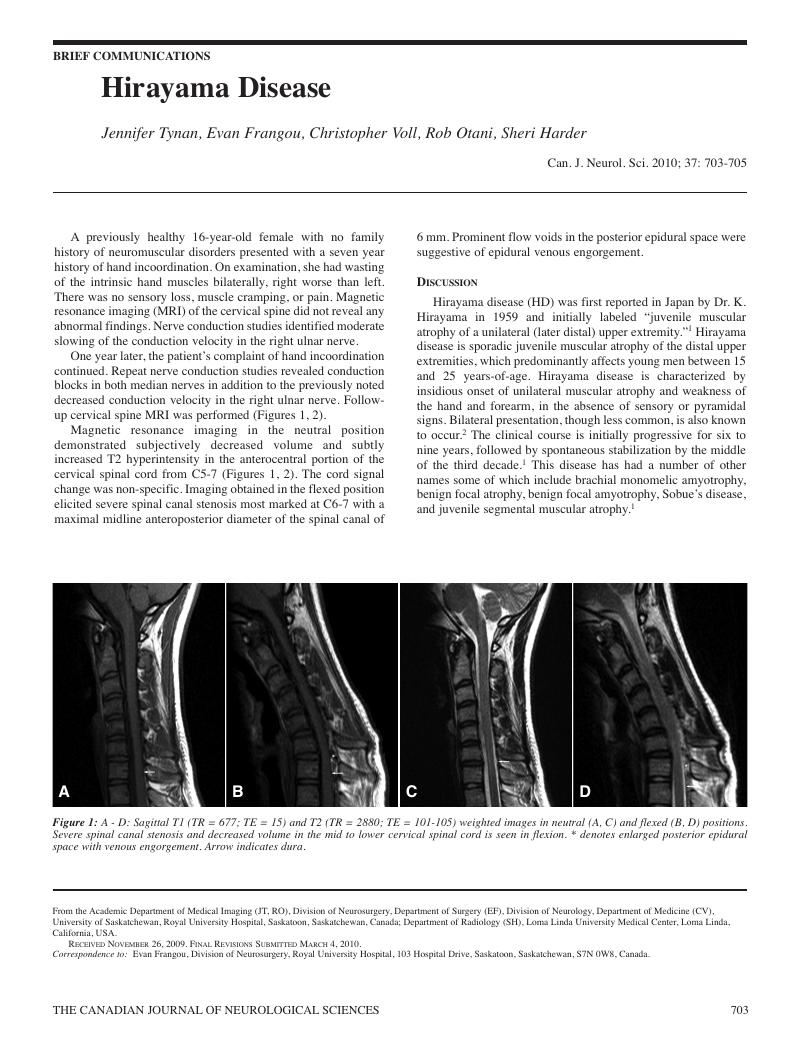Crossref Citations
This article has been cited by the following publications. This list is generated based on data provided by Crossref.
Ghosh, Partha S.
Moodley, Manikum
Friedman, Neil R.
Rothner, A. David
and
Ghosh, Debabrata
2011.
Hirayama Disease in Children From North America.
Journal of Child Neurology,
Vol. 26,
Issue. 12,
p.
1542.
Lehman, V.T.
Luetmer, P.H.
Sorenson, E.J.
Carter, R.E.
Gupta, V.
Fletcher, G.P.
Hu, L.S.
and
Kotsenas, A.L.
2013.
Cervical Spine MR Imaging Findings of Patients with Hirayama Disease in North America: A Multisite Study.
American Journal of Neuroradiology,
Vol. 34,
Issue. 2,
p.
451.
Yang, Guang
Yang, Xiaosu
Zhang, Ming
Yang, Yi
Xiao, Bo
Li, Guoliang
Yang, De
and
Wang, Xiaoyi
2014.
Hirayama Disease in Children From Mainland of China.
Journal of Child Neurology,
Vol. 29,
Issue. 4,
p.
509.
Baumann, Matthias
Finsterer, Josef
Gizewski, Elke R
and
Löscher, Wolfgang N
2017.
Early-onset Hirayama disease in a female.
SAGE Open Medical Case Reports,
Vol. 5,
Issue. ,
Lyu, Feizhou
Zheng, Chaojun
Wang, Hongli
Nie, Cong
Ma, Xiaosheng
Xia, Xinlei
Zhu, Wei
Jin, Xiang
Hu, Yongcheng
Sun, Yu
Zhu, Yu
Kuwabara, Satoshi
Cortese, Rosa
Maqbool Hassan, Kaukab
Takai, Keisuke
Paredes, Igor
Webere, Robert
Turk, Margaret
Kimura, Jun
and
Jiang, Jianyuan
2020.
Establishment of a clinician-led guideline on the diagnosis and treatment of Hirayama disease using a modified Delphi technique.
Clinical Neurophysiology,
Vol. 131,
Issue. 6,
p.
1311.



